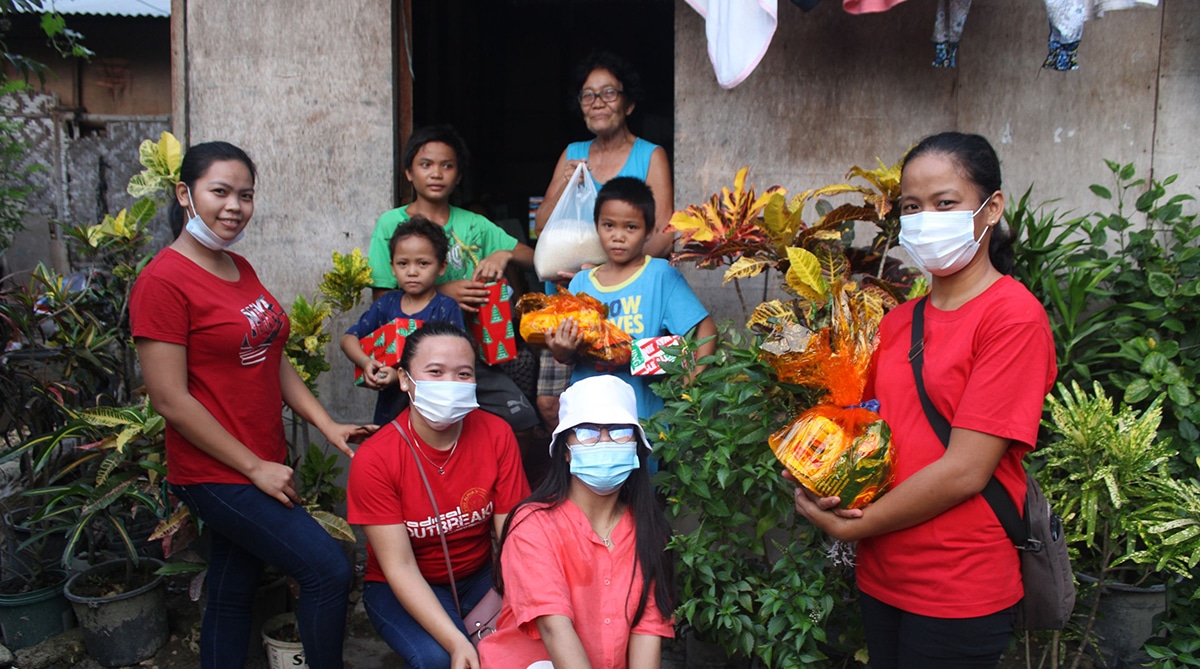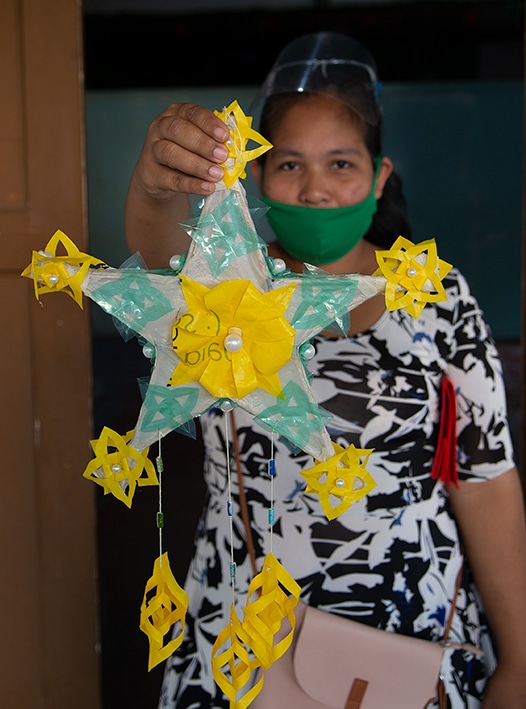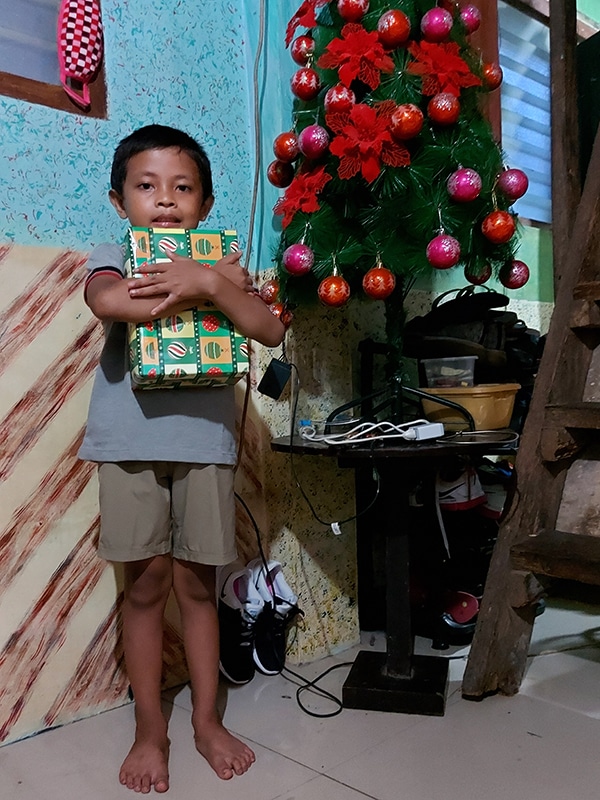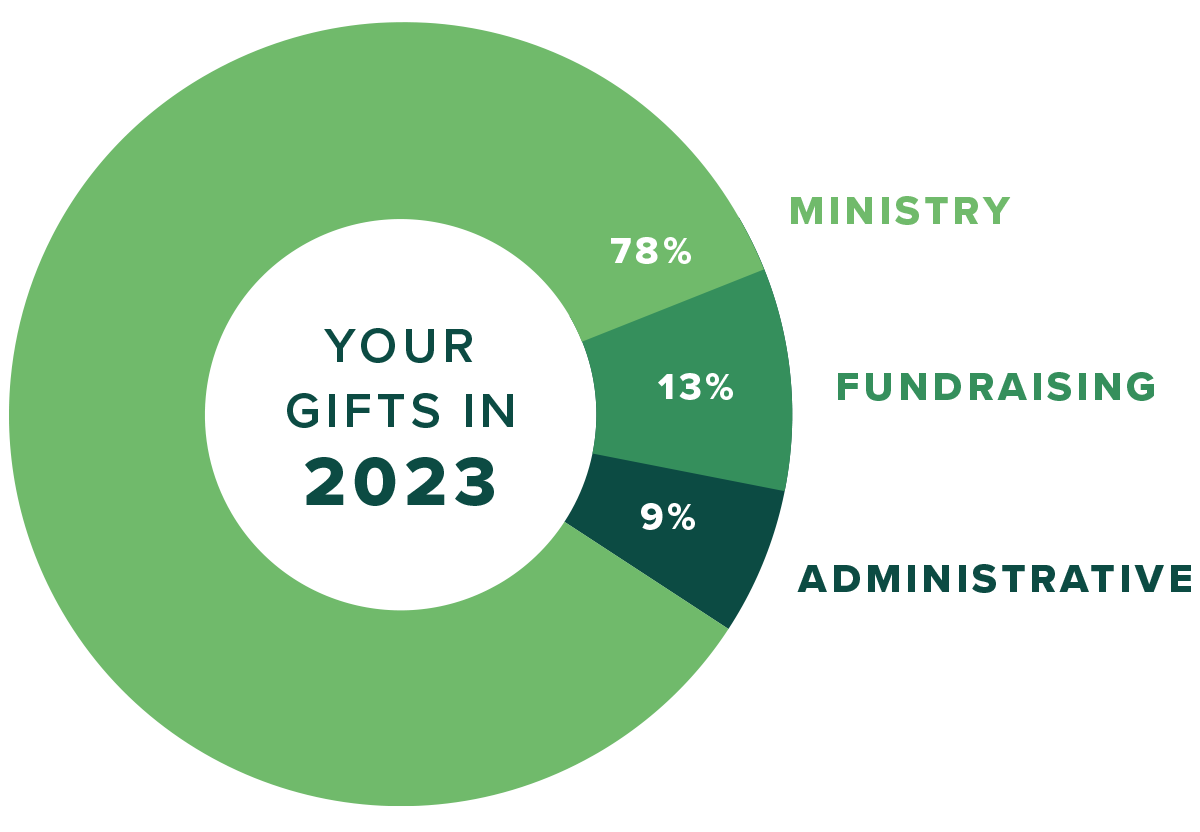Christmas is big deal in the Philippines, and Filipinos love to celebrate with many different traditions. For Child Champions, it is a perfect time to send a message of hope to Filipino children in poverty. Read how Filipinos celebrate Christmas using all five of their senses.
As the popular Christmas song says, “It’s the most wonderful time of the year!” In the Philippines, Christmas is the longest celebrated holiday. Filipinos even call it the third season, next to summer and the rainy season. The Christmas season starts on Sept. 1 in the Philippines.

The Sights of Christmas
No other nations around the world set up Christmas trees and put up festive decorations as early as Filipinos. Street vendors sell beautiful and colorful Christmas lanterns, called parol in Tagalog, as early as September, and they give a cozy and festive spirit when lighted at night.
And the poorest families, who are resourceful, create festive decorations out of recycled materials. They use recycled plastic bottles, sticks, and plastic bags to make their lanterns and hang them from their windows or doors to usher in the season.
There are also contests for making recycled parol that people look forward to all year.
Some Hope Centers in the Philippines also host parol contests. Children and their families make their own parol and display it in their houses or Hope Centers.

This important tradition not only promotes taking care of the Earth by recycling, but it also reminds us of what the bright shining star means — the birth of Jesus in Bethlehem, the very reason why we celebrate Christmas.
The Sounds of Christmas
During Christmas season in the Philippines, it is common to hear Christmas songs on the radio, inside malls, and even inside public transportation as early as September. For example, “Christmas in Our Hearts,” a song popularized by Filipino singer Jose Mari Chan, is an overly played song during this season. Fun-loving Filipinos make memes on social media about him that show him peeking through a door or a window before Sept. 1 as Filipinos anticipate his presence through that song days before the first of September. A humorous countdown only Filipinos could understand.
 Traditional Christmas carols, on the other hand, are often heard at churches, especially during the Simbang Gabi, which means “Night Mass” in Tagalog. The Night Mass is actually a series of nine masses held at dawn leading up to Christmas Eve, and it is practiced mostly by Catholics.
Traditional Christmas carols, on the other hand, are often heard at churches, especially during the Simbang Gabi, which means “Night Mass” in Tagalog. The Night Mass is actually a series of nine masses held at dawn leading up to Christmas Eve, and it is practiced mostly by Catholics.
Filipinos keep this tradition because, aside from hearing the story of the birth of Jesus, they love listening to the heavenly sound of the church chorale during mass.
Outside of the church, Christmas carols like “Jingle Bells” and “We Wish You a Merry Christmas” are sung repeatedly every night by caroler kids who go from house to house to serenade their neighbors. In exchange, people give them coins. The kids save all the money they collect up until Christmas. Then they divide it evenly among themselves to buy their presents. This activity starts along with the Simbang Gabi.
The Feel, Scents, and Flavors of Christmas
Another reason why Simbang Gabi is a popular tradition among Filipinos is that they enjoy the cool breeze at dawn. In the Philippines, where the weather is mostly hot and humid, this season gives people a chance to wear a sweater or a jacket that they have been keeping inside their closet for a year.
Yes, cool weather is a big deal for Filipinos!
Together with the cool breeze, the experience of Simbang Gabi wouldn’t be complete without smelling the steam and burned banana leaves from the stalls outside the church, where people cook and sell holiday delicacies of rice cakes in two different versions called bibingka and puto bumbong.
Bibingka, made from glutinous rice flour mixed with coconut milk and eggs, is traditionally cooked using a clay dish lined with banana leaves. It is placed over a clay burner with preheated coals and burning coals are placed on a tin pan to cover it. Once cooked, it is brushed with margarine or butter and topped with slices of salted egg and grated coconut or cheese.
Puto bumbong, on the other hand, is made from white and purple glutinous rice that is soaked in water overnight. Sometimes people use purple yam or purple food coloring in the absence of purple rice to achieve a bright purple color. The water is then drained, and the mixture is packed inside bamboo tubes. These tubes, normally three per batch, are put on a steamer for the mixture to cook. When they are cooked, the rice mixture is removed from the bamboo tubes and served on a clean bamboo leaf, brushed with margarine or butter, and topped with muscovado sugar and grated coconut or cheese.
After the dawn mass, churchgoers bring these delicacies home for breakfast and share them with their families.
The Feeling of Joy This Season
 Christmas is important to Filipino families. They love to get together during this time to eat, share stories, play games, laugh, and exchange gifts. They share all of these during Noche Buena (Christmas Eve). Because food plays a big part in the celebration, typical Noche Buena food includes ham, spaghetti, roasted chicken, macaroni or fruit salad, rice cakes, and other savory dishes.
Christmas is important to Filipino families. They love to get together during this time to eat, share stories, play games, laugh, and exchange gifts. They share all of these during Noche Buena (Christmas Eve). Because food plays a big part in the celebration, typical Noche Buena food includes ham, spaghetti, roasted chicken, macaroni or fruit salad, rice cakes, and other savory dishes.
But not all families can afford this kind of feast. Like the families of the children who are part of OneChild’s program, most can only afford one decent meal a day from their daily income of the equivalent of $3. That is why Child Champions prepare a lot of food at Hope Centers during their Christmas party so the children will feel special on this day.
Also on this day, Child Champions make children’s wishes come true by giving them presents of new clothes, bags, shoes, or toys. The celebrations and gifts are only possible because of generous sponsors and donors who give to OneChild’s Christmas Gift Fund so that all children in the program can celebrate Christmas.
In some Hope Centers, Child Champions allow parents to do the Christmas shopping themselves for their children. This gives ultimate joy both for parents and their kids.
Regardless of how grand or simple the Christmas celebration is, if it is shared with loved ones, it is the happiest feeling in the world for Filipinos.
Hearing the Message of Christmas
The message of Christmas through the life of Jesus resonates in the hearts of Filipinos as it is taught in the church even out of the Christmas season. Because the Philippines has a large population of Christians, children grow up knowing that Christmas is more about Jesus than Santa Claus. And with this belief, the message of Christmas roots deeper than just expecting presents under the Christmas tree.
And with that, we are grateful for our Child Champions who place importance on telling the story of Jesus, especially during Christmas, so Filipino children will have a deep sense of hope — not only during Christmas but for the rest of their lives.
Help a child in poverty experience the joy of Christmas by giving to OneChild’s Christmas Gift Fund.
We are accountable to the children we serve AND to our donors.
Our accountability to our donors is one of our highest priorities. Our goal is to use the funds entrusted to us as wise stewards. To do this requires continued monitoring of our fund distribution. OneChild is also a member in good standing with the Evangelical Council for Financial Accountability (ECFA)







